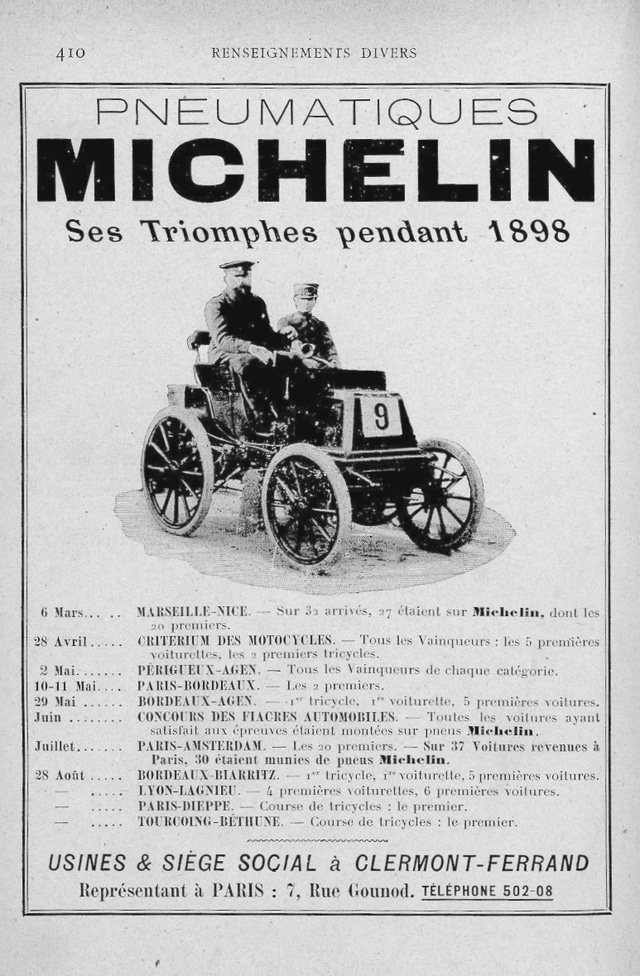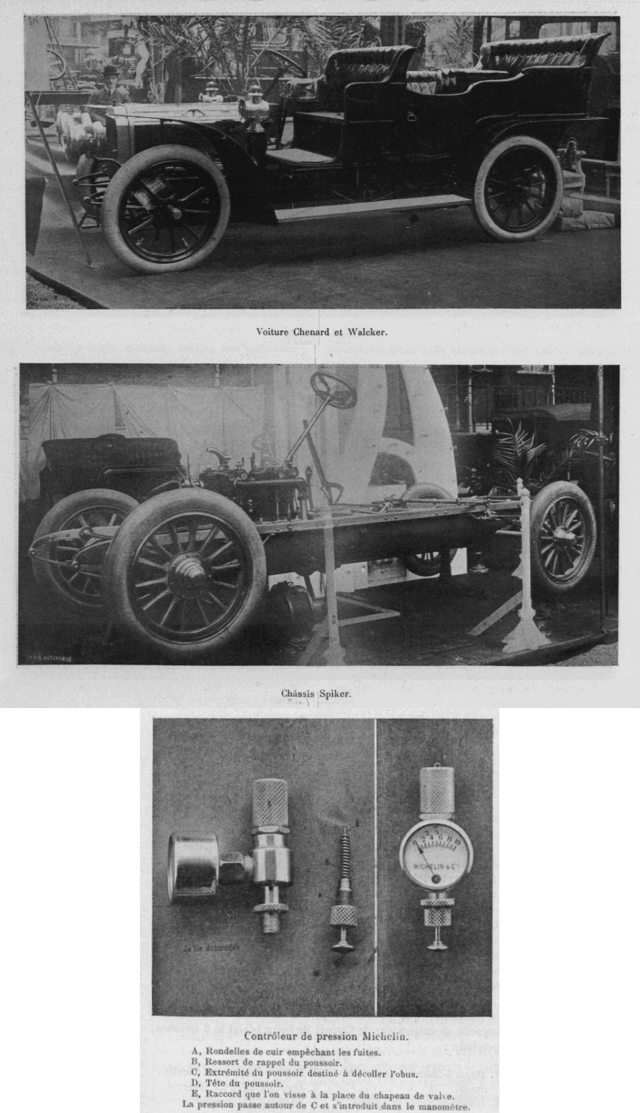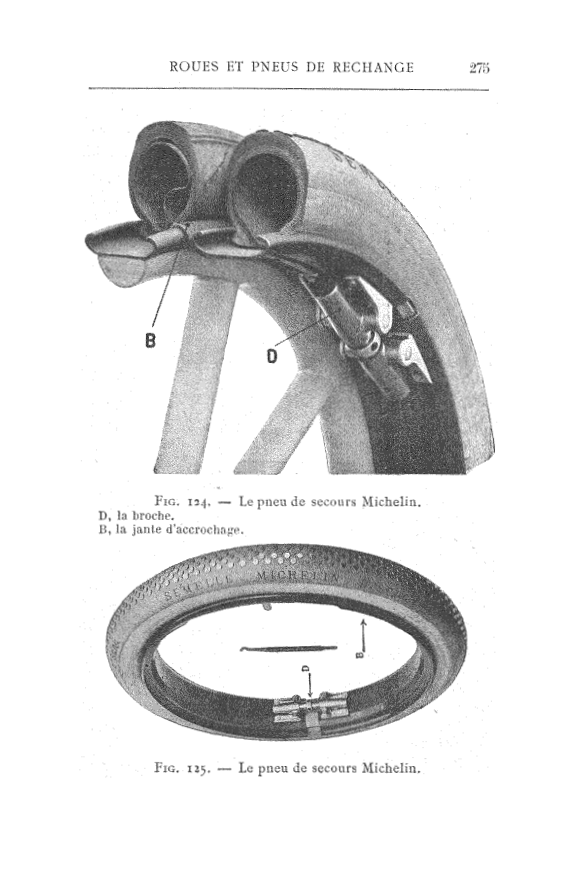


Foundation and Early Steps (1889–1900)
Michelin & Cie was founded in France in 1889 by brothers André and Édouard Michelin. They took over the family business Barbier-Daubrée, which since 1832 had specialized in rubber hoses and brake linings for horse-drawn carriages. By the time the brothers arrived, the firm was on the brink of bankruptcy, but on May 28, 1889, it was renamed Michelin et Cie and reorganized as a limited partnership. The factory in Clermont-Ferrand occupied 12 hectares and employed around 52 workers.
The first product of the revitalized company was a patented rubber-fabric brake pad for carriages and bicycles, marketed under the name The Silent and presented at the 1889 World’s Fair. This innovation revived demand for Michelin’s products and marked the successful beginning of a new era for the enterprise.
The company’s most important breakthrough was the invention of the removable pneumatic tire. In 1891, Édouard Michelin assisted a British cyclist who arrived at the factory with a Dunlop tire in need of repair. Observing that the repair of such a tire required several hours, Édouard recognized both the potential of air-filled tires and the major drawback of the existing technology—the difficulty of repair. In less than two months, he developed a tire that could be quickly removed, reducing repair time to just 15 minutes. The brothers patented the removable bicycle tire on June 18, 1891. Its effectiveness was dramatically proven when cyclist Charles Terront won the 1891 Paris–Brest–Paris race on a bicycle equipped with Michelin tires.
Encouraged by this success, in 1892 the brothers organized their own demonstration race from Paris to Clermont-Ferrand, secretly scattering nails along the road so that every participant would puncture their tires. The trial showed that Michelin’s removable tires could be patched within minutes and went down in history as the “Nail Race.” Victories in competition instantly boosted demand, and by 1892 Michelin began exporting tires abroad, with its Paris dealer Boyriven arranging the first overseas shipments.
Riding this wave of success, the Michelin brothers turned their attention to automobiles. In June 1895, they equipped a motor vehicle with pneumatic tires for the first time—the prototype car nicknamed L’Éclair (“The Lightning”), which competed in the Paris–Bordeaux–Paris rally. Although L’Éclair failed to finish on time, the attempt proved the applicability of pneumatic tires to motor transport. By 1896, many racing drivers observed that, despite the time required to change a punctured tire, air-filled tires saved hours over the course of a race by cushioning impacts and increasing speed. Journalist Paul Meyan wrote in Le Figaro in 1896: “It is now clear that for passenger cars weighing up to 1,000 kilograms, pneumatic tires are an essential condition for fast and smooth driving.”
Marketing, Branding, and Growth Strategy (1898–1910)
At the turn of the century, Michelin focused on building its brand and communications strategy. In 1898, the company introduced its legendary mascot—the tire man known as Bibendum. The idea was born when Édouard Michelin noticed that a stack of tires resembled a human figure. The artist Marius Rossillon (pen name O’Galop) created the smiling tire-man holding a goblet filled with nails and broken glass, accompanied by the Latin motto Nunc est bibendum (“Now is the time to drink”). Thus was born the advertising figure who “drinks up obstacles,” symbolizing the idea that Michelin tires absorb the shocks of the road. Bibendum quickly became the emblem of the company and one of the world’s oldest logos, later crowned “Logo of the Century” in 2000.
In 1900, Michelin published the first edition of the famous Red Guide—a free handbook for motorists containing maps, travel advice, and listings of garages, hotels, and restaurants throughout France. The guide was designed to stimulate automobile tourism (and consequently, tire demand) by providing useful resources for drivers. Over time, the Michelin Guide became a global cultural institution, especially for its restaurant ratings.
Alongside the Guide, Michelin also began producing maps and even installing road signs. By 1910, the company launched the magazine Le Bibendum and started erecting its own enamel road markers and later standardized concrete milestones. These initiatives supported road navigation and reinforced Michelin’s image as a helpful partner for motorists.
Michelin also recognized the promotional value of motorsport. André Michelin sponsored cycling and automobile races, using the extreme conditions of competition as both a testing ground for tires and a marketing showcase. Victories and record-breaking runs—such as the 1899 achievement of the electric car Jamais Contente on Michelin tires, the first vehicle to exceed 100 km/h—linked the Michelin name to innovation and reliability.
Expansion in the Early 20th Century
In the early 1900s, Michelin expanded rapidly beyond France. By 1906 it had opened its first overseas factory in Turin, Italy, followed in 1907 by a plant in Milltown, New Jersey, USA. Although the American plant was closed in 1930 due to the Great Depression, Michelin had already established itself across Europe. In 1908, the company introduced the first twin-mounted truck tires, and in the same year it began sponsoring aviation prizes, foreshadowing its entry into aircraft tire production.
During World War I, Michelin pivoted to military production, even building the world’s first concrete runway in 1916 and manufacturing nearly 3,000 Breguet-Michelin aircraft for the French army.
The interwar years saw continued innovation: in 1929, Michelin launched the lightweight rubber-tired railcar Micheline, and in 1935 it acquired the bankrupt carmaker Citroën, saving the iconic brand and integrating automobile manufacturing with its core tire business.
Michelin During WWII and the Radial Revolution
When World War II began, Michelin’s factories were initially located in the unoccupied zone of France. Nonetheless, German authorities requisitioned much of its output for the Wehrmacht and seized raw materials. Despite pressure, Michelin resisted full collaboration, and accounts suggest it may have even sabotaged production by supplying subpar tires.
Meanwhile, its engineers continued research. Building on earlier experiments, Michelin secretly developed the first radial tire during the war, patenting it in 1946 and launching it commercially in 1949 as the Michelin “X.” The radial tire offered far superior durability and fuel economy compared to traditional bias-ply tires, revolutionizing the industry and forcing competitors worldwide to adopt the technology. By the 1970s, Michelin had become the world’s largest tire manufacturer.
Impact on Transportation and Legacy
Michelin reshaped the transportation industry with two defining innovations: the removable pneumatic tire (1891) and the radial tire (1949). Beyond tires, the company played a vital role in automotive culture—stimulating tourism with its maps and guides, influencing gastronomy with its restaurant ratings, and standardizing road signage.
Today, Michelin remains one of the global leaders in tire manufacturing, producing tires for vehicles ranging from bicycles and passenger cars to trucks, aircraft, and even space shuttles. Its headquarters are still in Clermont-Ferrand, while its factories and research centers span the globe. The spirit of invention and customer focus instilled by André and Édouard Michelin continues to define the company’s strategy more than 130 years later.